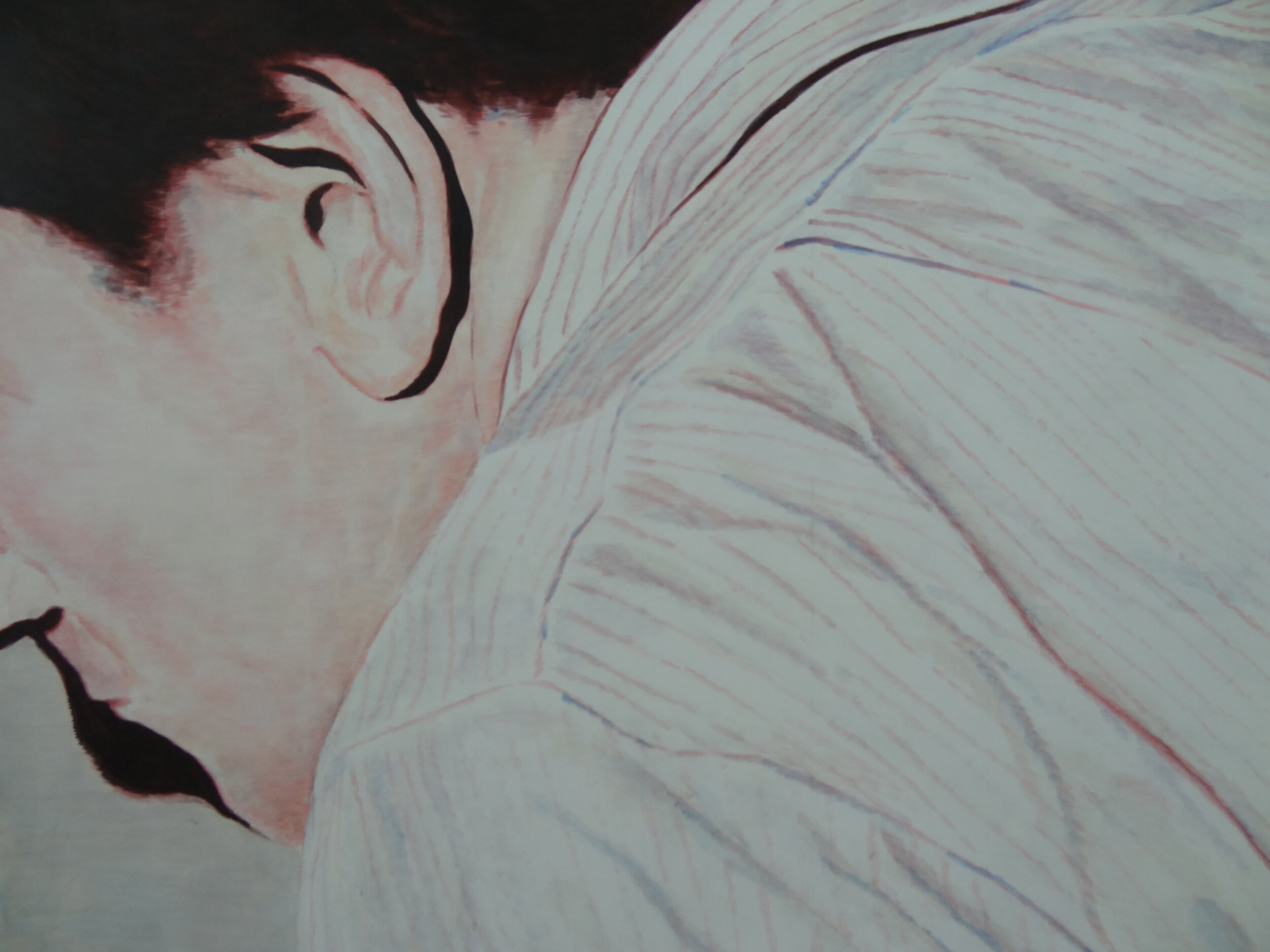
08.29 - 09.23.20
OUR HEADS ARE ROUND SO OUR THOUGHTS CAN CHANGE DIRECTION
Julius Bagoyo / Allan Balisi / Kiko Capile / Lyndon Maglalang / Nix Puno /Jay Torres
image detail: Allan Balisi, A Happy Tune, 2020The exhibit explores the idea of the portrait in our ever changing contemporary time. Facial recognition is not merely the measure and application of physical attributes to a system, a registration of facts, whereas, a portrait is a sign about the instability of being today, a psychophysiological picture of ourselves, looking inward and projecting visions of doppelgangers and archetypes.
Thus, taking note of Francis Picabia’s statement and reflecting on his nomadic aesthetic with gambits of ironic, irreverent, and indeterminate visual spectacles, puts a timely appearance to uncertain conditions now that give way to creative renditions of beauty, identity, subjectivity, and wit.
INSTALLATION VIEWS
WORKS IN THE EXHIBIT
Allan Balisi, Liberation of Desire, oil on canvas, 16 x 18 inches, 2020
Allan Balisi, A Happy Tune, oil on canvas, 24 x 30 inches, 2020
Jay Torres, Decay and Renewal, oil on canvas, 24 x 24 inches, 2020
Jay Torres, Prescripted Glasses, oil on canvas, 9 x 12 inches, 2020
Nix Puno, Could be Anyone, graphite on paper, 13 x 14.5 inches, 2020
Nix Puno, A Lack Of Strangers, graphite on paper, 13 x 14.5 inches, 2020
Julius Bagoyo, GOVACHRE, acrylic on canvas, 24 x 30 inches, 2020
Julius Bagoyo, NIGRUM MILES, acrylic on canvas, 30 x 40 inches, 2020
Kiko Capile, Oblivia, pen and ink hannemuhle paper, 19 x 22 inches, 2020
Lyndon Maglalang, Round, acrylic and dry paint on canvas, 24 x 30 and 19 x 24 inches (diptych), 2020
In your respective works, where do the portraits come from?
JAY TORRES: The portraits are based on actual people and are reflections of my personal relationship with them. Deformed in a way that they are still strangers to me.
ALLAN BALISI: Despite the anonymity or absence of a face, I focus on other expressive qualities that I would normally find in the face. The images comment on portraiture by locating expressiveness in gestures and stillness of figures.
NIX PUNO: They're based on an actual person, rendered loosely to look like a portrait but not quite.
JULIUS BAGOYO: I think it's more of a technical thing, composition-wise. In my process, usually the subject and reference comes first; the clothing, pose, lighting, etc. comes first before I go all out with the "forms" and "faces". Concept-wise, it almost always comes naturally to me, like I don't have to think about what it's going to look like when it's done. Right now it's at that point where everything I do is about how it feels and if it feels right.
Are the portraits a manifestation of the “inside”, of internal esoteric meanings, or are they just purely on the “outside”, as formal observation on the surface?
KIKO CAPILE: As for my portraits, its more of the inside. I created them in a way that it can provoke contrasting emotions. It represents emotional states that are difficult to express. They are portraits of complexity and ambiguity…
LYNDON MAGLALANG: It depends on the viewers on how they interpret the message of artworks on how they build connections from the master-piece itself. My ultimate aim/point is on how to become more visionary and prepare with the upcoming scenarios, and every time that it comes across my path I have two big pictures in my mind which encompasses the small and huge circumstances between the two that I mentioned, one thing that I am sure about is that everything is clear to me whatever will come in my way.
Is there a particular mood, an ongoing metaphor, or even a social narrative and satire that is present in the picture? And what is the process involved?
ALLAN BALISI: I don’t try to capture moods in my paintings. For the colors, I chose what’s the best color to translate the chosen images into painting, how to adjust to the grainy screenshots or how will I allow the images to transform in my desired output, the mood and colors or absence of colors. It’s all intuitive.
NIX PUNO: They're actually the same person (that you see in my two works). I just took random snapshots of what my mom was watching on tv. So it's me just basically lifting out two passing still frames out of the millions we've probably seen these past few months (since we've all been pretty much locked up at home and glued to our screens).
JULIUS BAGOYO: Not necessarily. Again, when I start painting these I really don't think about much of what it can symbolize or be a metaphor of. Although I do like the idea of these b-word people being stripped and almost ridiculed for not having their faces painted. I guess it is kind of like a "humiliation" process. Overall, I'd like to believe that my works have stayed the same since I've started; with them still not being in any way didactic, and always free to any interpretation (I do however, have some works which are direct social commentaries). Also, I have never thought of it that way (i.e., the work having a particular sense of humor) and it's never been pointed out, but to a certain extent I guess subconsciously there is. Almost satirical, as if saying "these aren't the royalties you're used to seeing".
















